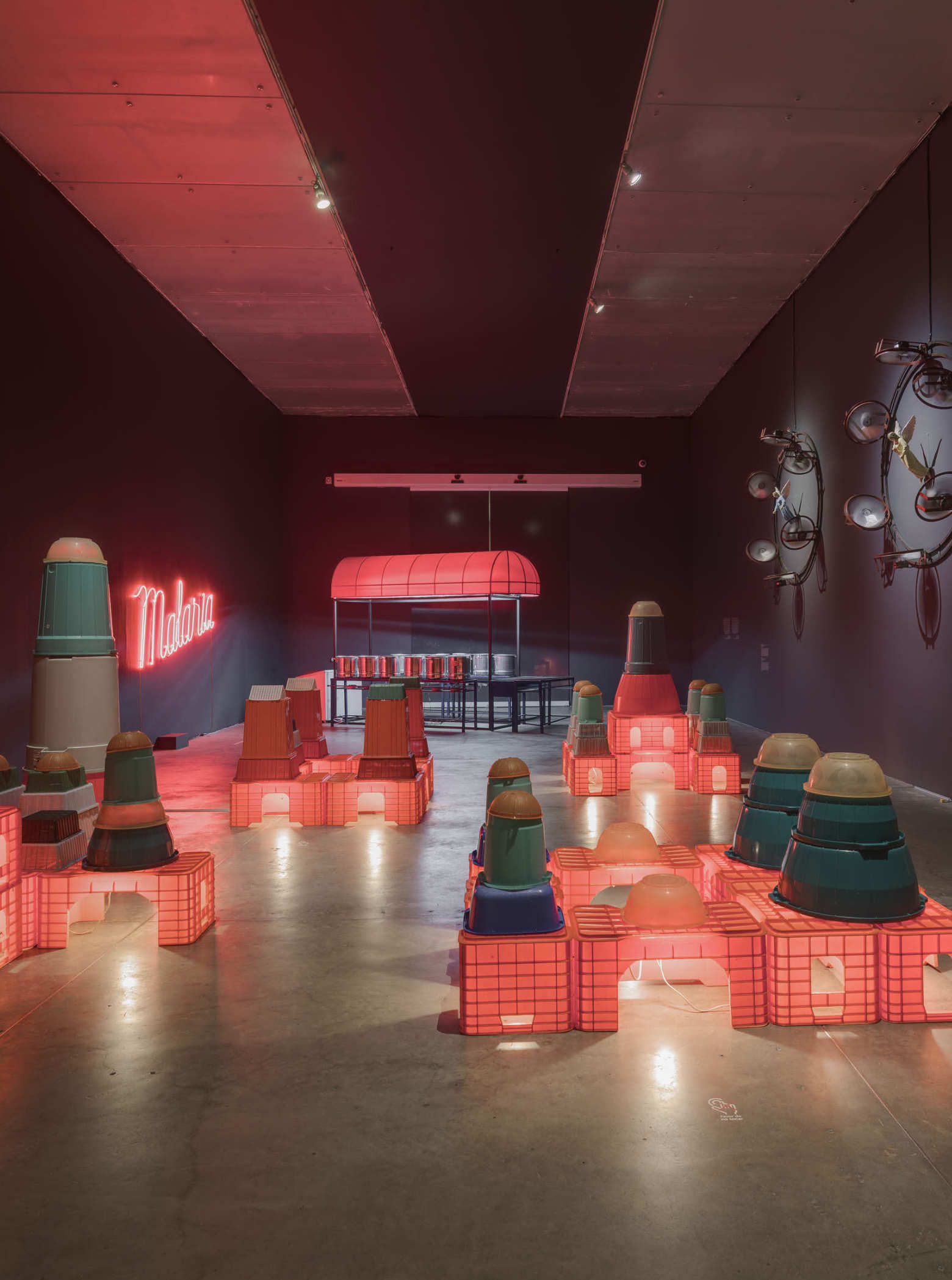Dennis Oppenheim
gallery 5
Genealogies and Dissidences. MUAC Collection
Dennis Oppenheim was one of the pioneers of land art, action art, video art and conceptual art in the United States. Since the 1970s, Oppenheim produced sculptural installations that incorporated construction materials and everyday objects as part of interventions with a great expressive impact. In 1998, on the invitation of the Carrillo Gil Art Museum, Oppenheim created a series of installations influenced by his experiences in Mexico City’s shops, markets and warehouses and defined by their playful approach to the city’s cultural codes. This project associates a materiality connected to commercial objects and everyday life with religious and political icons in the context of growing economic globalization, and shows some of the conceptual and expressive strategies developed by the artists throughout his career. This exhibition deploys a selection of Oppenheim’s production in Mexico, that also exemplifies the interest by the local scene in the genealogies of international contemporary art.

For the past decade and a half, MUAC has built a collection of art produced since 1952 without intending that the artworks, documents and histories it contains would ever constitute a unified, geographic, linear or identitarian narrative. As is intrinsic to contemporary art collections, this sampling of the living, controversial culture of our times implies groupings and lineages as well as solitary, dissident adventures. It would betray this heterogeneity to present our collection as a simplified whole. Nevertheless, the growth and maturation of our archives suggests that it is no longer convenient to conceal their complexity behind general thematic presentations.
Genealogies and Dissidences represents a new phase in which the museum’s collections occupy a dedicated section of the building through the simultaneous exhibition of a variety of cores, which will be periodically renewed. These cores can be historical explorations, the presentation of a large-scale installation or essayistic groupings. We hope that this multiple, discontinuous presentation does justice to the way in which we increasingly appreciate art and culture, precisely because it allows us a multitude of bursts of matter and meaning.


